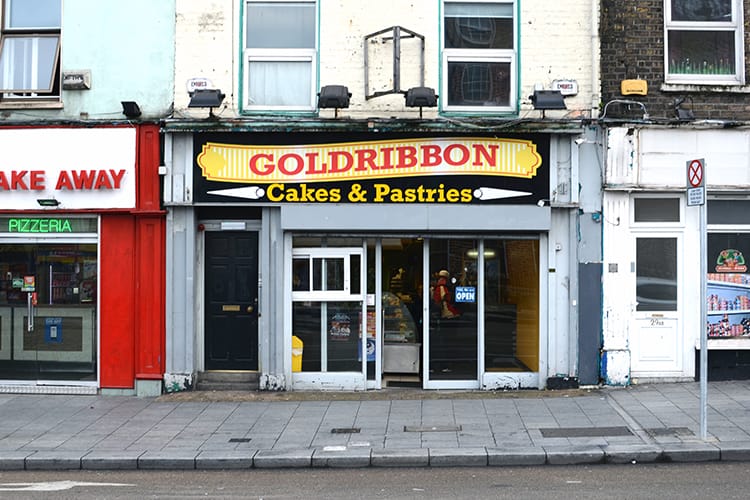What’s the best way to tell area residents about plans for a new asylum shelter nearby?
The government should tell communities directly about plans for new asylum shelters, some activists and politicians say.
From a storefront on Dorset Street, Gold Ribbon Bakeshoppe sells traditional Filipino pastries and more.

Growing up, Rolando Estores lived with his family in an apartment above his grandparents’ busy bakery in the city of Malolos in the Philippines.
By the time Estores turned 18 he wanted nothing to do with baking. But that eventually changed.
Sat in the office at the back of the Golden Ribbon Bakeshoppe on Dorset Street last week, Estores said that some of the recipes they use there are they same as those in Malolos. Like pandesal, or “salt bread”, which is commonly eaten for breakfast in the Philippines, he says.
Estores wears a white mesh fedora. The office is a simple room, with a computer monitor with CCTV feeds of the shop, a desk, a couple of chairs. On a small corner table are two stylized images of saints embellished with gold.
When he and his wife, Ruby, moved to Ireland about 10 years ago, she dropped being a midwife — it would have taken two years studying to get certified here — and worked as a carer, Estores says. He worked in restaurant kitchens.
Ruby got back pain, he said. She struggled with the heavy lifting that comes with working as a carer. So they opened their own business.
“You cannot find in any [other] bakery here, the ube cake, the pandan cake, the yema cake,” says Estores. “And the pandecoco, nobody makes pandecoco here I think.”
The storefront is modest, and sits between Romanian grocery store Alimentara Transilvania and Fortes chipper.

They make Filipino cakes and pastries. Home bakers, perhaps, are the only competition Estores thinks he has when it comes to traditional Filipino flavours.
Ube, he says, is purple yam. Yema is a kind of custard sweet made from egg yolk. Pandan is a tropical plant found in South and Southeast Asia, also called screwpine.
“There’s only a few Filipinos here,” says Estores, “so the customer is very limited.” There were 13,000 Filipinos in Dublin as of 2011, according to the Philippines Consulate.
Some customers come from further afield, though. “Even from Brazil, they are coming here for the pandecoco because they are doing that in Brazil and Portugal,” he says.
“They said the Irish cake is sweeter than ours,” he says.
Among the rows of baked goods at the counter are packets of mamon, a lemon-cream cheese sponge cake. “Not a dessert,” says Estores. But it does taste like a light, fluffy cheesecake.
The light purple ube cakes are sweet and marshmallowy. The cake has a coconut flavour, too. It’s the first thing you smell through the doors of Gold Ribbon.
The vivid pistachio-green pandan cake is milder. The icing isn’t so sweet. The flavour is close to toasted coconut.
The pandecoco looks like a dinner roll, but is filled with textured coconut filling. It’s sweet but light and delicious.
Some of the cakes and pastries have histories of exchange and immigration. Pandecoco was inherited from the Spanish, who invaded the Philippines in 1521 and occupied the country for nearly 400 years, says Estores. The name comes from the Spanish “coconut bread” – and the same lineage as pandesal, which is not a dessert.
The small flaky pastry called hopia is actually Chinese, says Estores. His recipes use mung bean paste, or sweet onion, inside them. Both taste kind of savoury-sweet.
China and the Philippine archipelago have traded for centuries. Today, the Chinese community in the Philippines, along with people with mixed Chinese and Filipino ancestry, make up a considerable minority of the overall population – a quarter, as of 2013.
“There are no original Filipino foods,” Estores jokes.
Get our latest headlines in one of them, and recommendations for things to do in Dublin in the other.